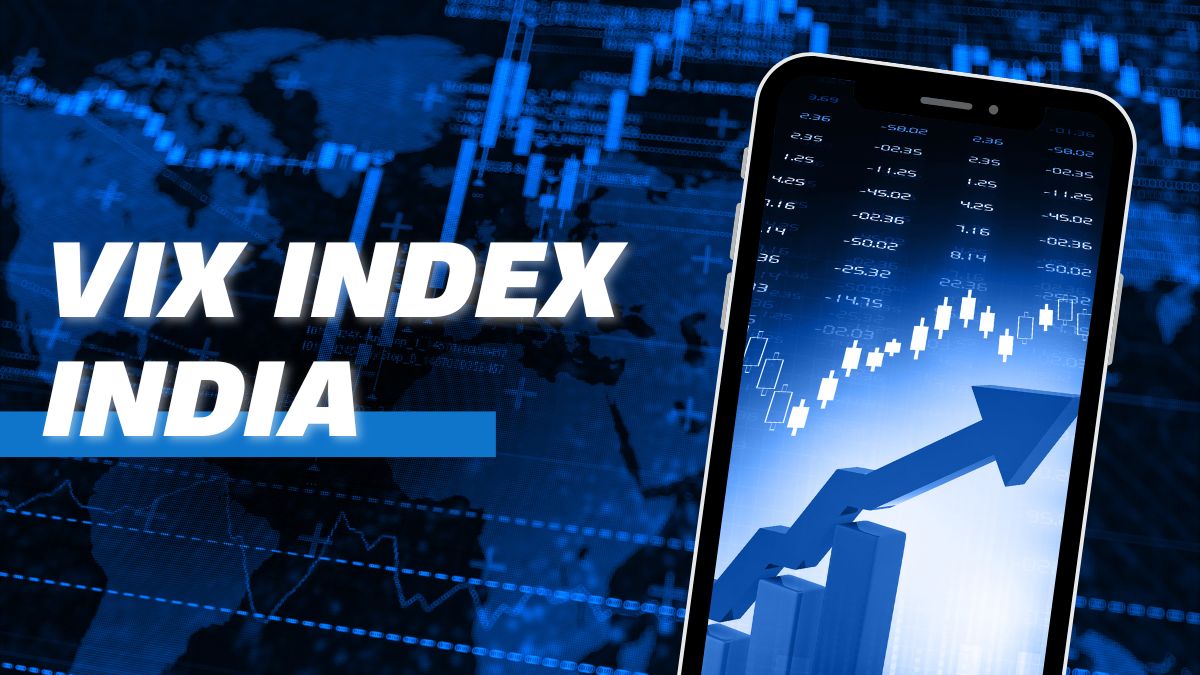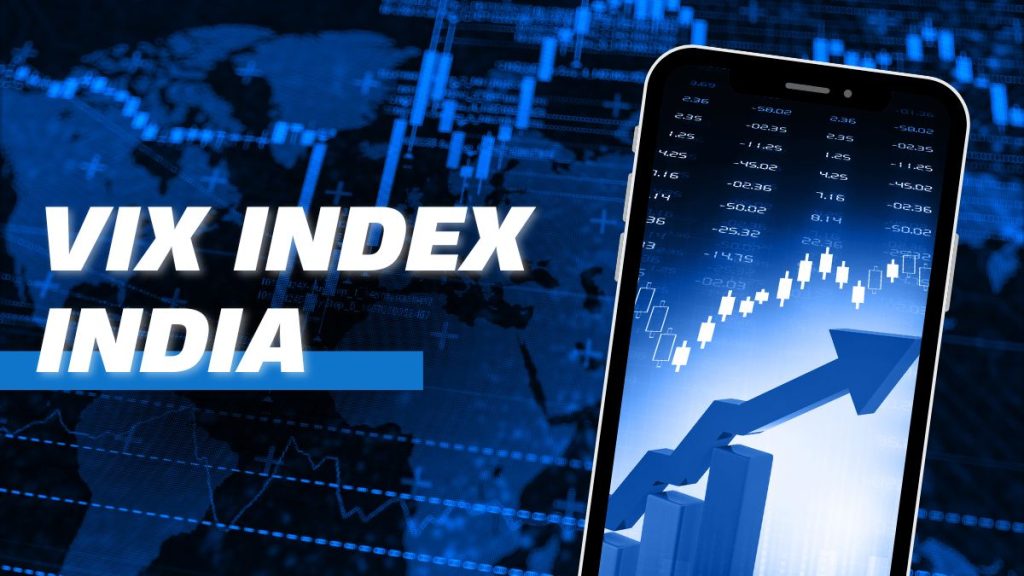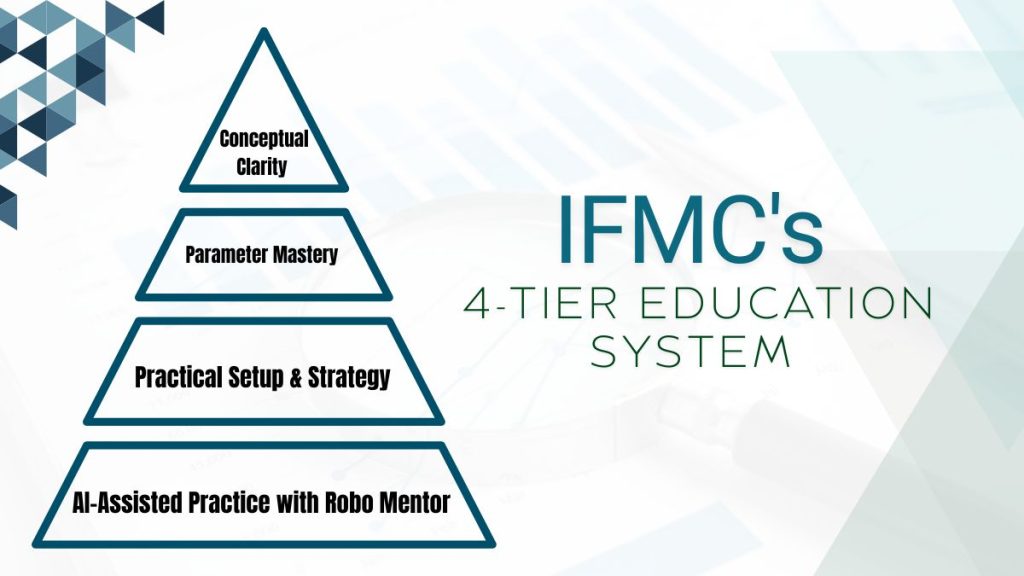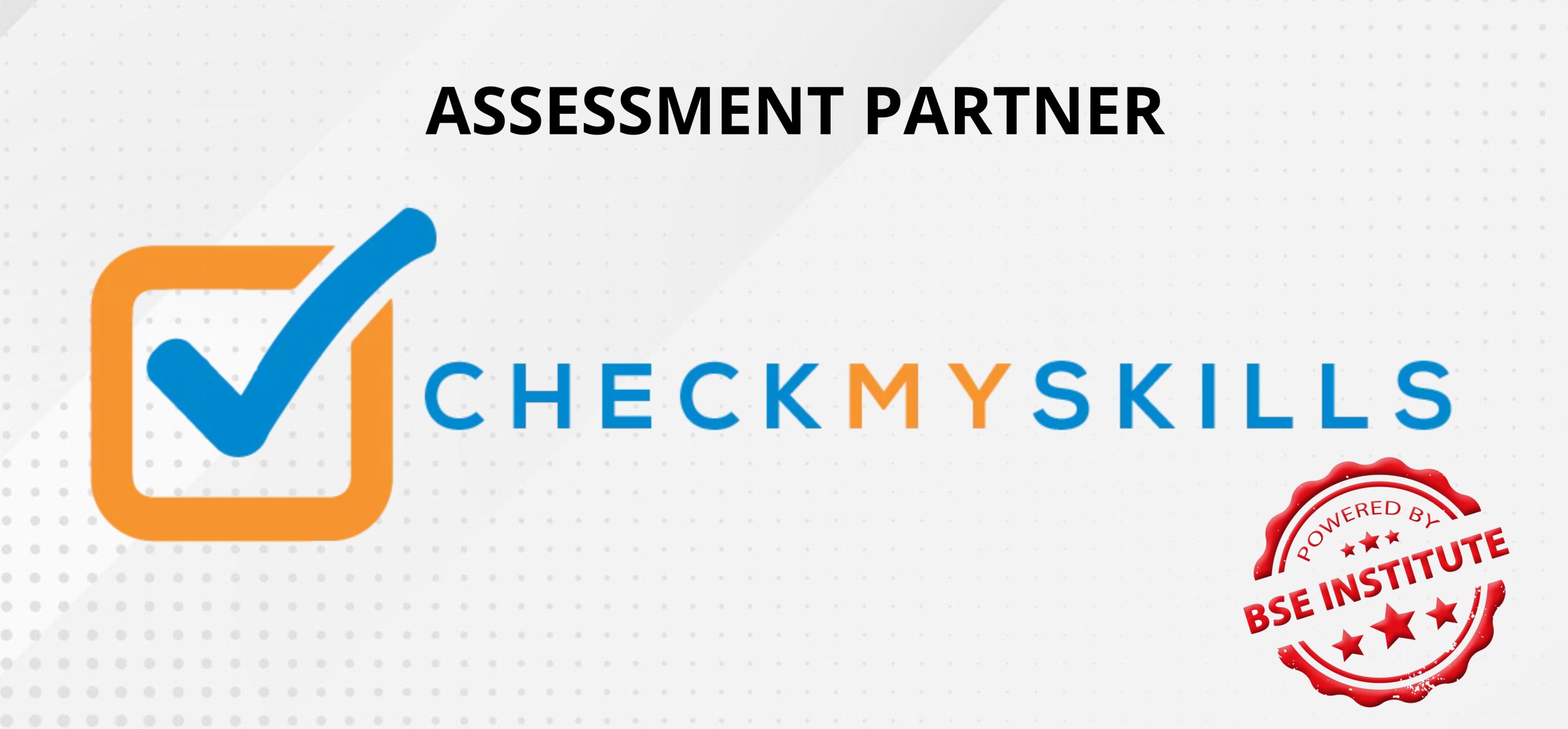Introduction to Market Volatility
Market volatility is a fundamental concept in financial markets, which means the degree of uncertainty or fluctuation in the value of securities, assets or market indices over a period of time. In the context of Indian stock market, volatility plays a crucial role in shaping investment strategies and risk management decisions. The India VIX Index, also known as the India Volatility Index, is the benchmark for measuring expected volatility in Indian market. Calculated and published by National Stock Exchange (NSE), the India VIX Index gives a real time snapshot of market participants’ expectation of future volatility. By tracking the India VIX, investors and traders get valuable insights into the magnitude of price movements, so they can navigate the stock market and take informed decisions. As a volatility index, the India VIX is a must have for anyone involved in Indian financial markets, it gives a clear picture of market sentiment and risk.
What is India VIX Index? Understanding the Fear Gauge of Indian Markets
India VIX (Volatility Index) is one of the most important market indicator for investors and traders navigating the Indian equity markets. Introduced by National Stock Exchange (NSE) in 2008, the India VIX measures the expected volatility of NIFTY 50 Index for the next 30 calendar days, it is a barometer of market sentiment and investor confidence. India VIX is a market sentiment indicator and a measure of market risk, helps traders and investors to gauge the current market conditions and manage risk.
Unlike traditional price indices like NIFTY 50 which tracks market direction based on equity price movement, the India VIX focuses only on volatility expectations. This difference makes it a very useful tool to understand market psychology and predict price movements. The India VIX helps investors to understand market risk and the risk in their investment positions.
Key Features of India VIX
India VIX operates on several fundamental principles which are different from other market indicators:
Forward Looking: Instead of reflecting historical volatility, India VIX captures the market’s expectation of short term volatility by measuring market participants’ expectation of future price movements. This forward looking nature makes it very useful for anticipating the market conditions.
Percentage Expression: The index expresses volatility as a percentage, so it’s easy to understand the expected price movement. For example, a VIX of 15 means investors expect prices to move within +/- 15% over the next 30 days.
Inverse Correlation with Markets: Historically India VIX and NIFTY have shown strong negative correlation, when volatility rises NIFTY falls and vice versa.
How is India VIX Calculated? The Math Behind
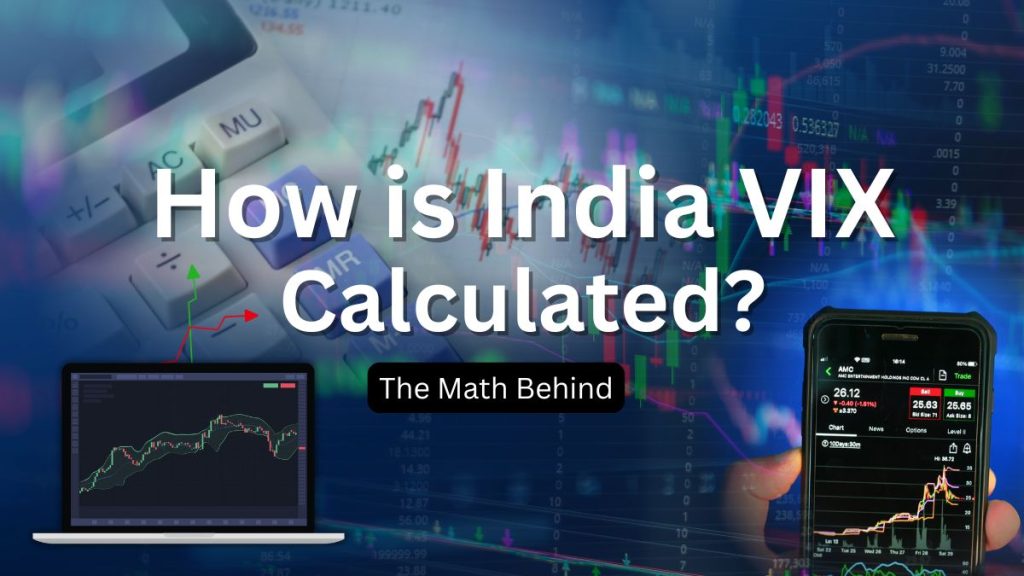
Understanding the calculation methodology of India VIX gives you a deeper insight into its interpretation and application. India VIX uses the same calculation methodology as CBOE VIX, which is the benchmark measure of expected market volatility based on S&P 500 index option prices and is widely used in volatility trading. Calculating India VIX involves using a modified Black-Scholes model for NIFTY options market and the process uses NIFTY index option prices to determine the expected volatility and plays a key role in risk management and hedging. There are online calculators available which simplify the process of calculating India VIX.
India VIX Formula
The formula for India VIX calculation is:
India VIX = 100 × √((Sum[Weighted Implied Volatility Squared]/Total Weight)
This complex formula involves several critical components which work together to give the final volatility reading.
Variables in India VIX Calculation
1. Time to Expiry The time to expiry of options contracts is calculated in minutes instead of days to get the level of precision expected by professional traders. This granular approach ensures accuracy in volatility measurement.
2. Interest Rate Component The NSE MIBOR rate of relevant tenure (30 days or 90 days) is taken as the risk free interest rate for the respective expiry months of NIFTY option contracts. This component accounts for the time value of money in option pricing.
3. Strike Price Selection The strike price of NIFTY option contract available just below the forward index level is taken as the ATM (At-The-Money) strike. This reference point helps in selecting the relevant option contracts for calculation.
4. Bid-Ask Quote Analysis NIFTY option Call contracts with strike prices above the ATM strike and NIFTY option Put contracts with strike prices below the ATM strike are identified as out-of-the-money options and their best bid and ask quotes are used for calculation.
5. Statistical Interpolation For strikes where quotes are not available, values are derived through interpolation using a statistical method called “Natural Cubic Spline” to ensure complete data coverage.
Advanced Calculation Methodology
The calculation process involves advanced mathematical techniques to ensure accuracy and reliability:
Weighted Variance Calculation: The variance is calculated by giving weights to each of the NIFTY option contracts used for calculation as per CBOE method.
Separate Expiry Analysis: The system calculates variance separately for near-month and mid-month expiry contracts and then combines them using time-weighted averages.
Quality Control Measures: NSE implements multiple quality checks to ensure data integrity and calculation accuracy throughout the process.
For more details on the official calculation methodology, traders can refer to the NSE’s white paper on India VIX computation.
How to Interpret India VIX Values
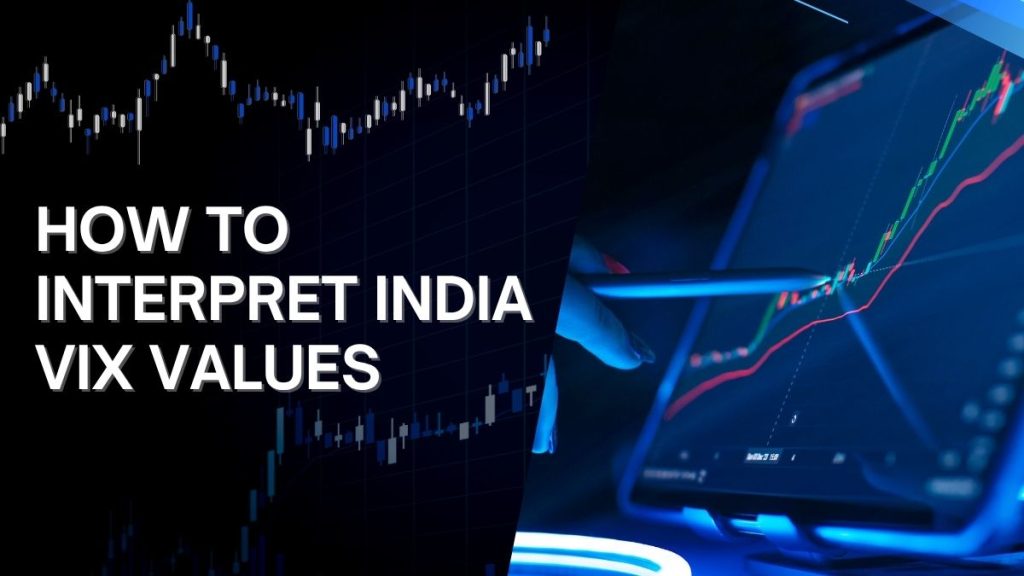
Understanding how to interpret India VIX values is crucial for making informed trading and investment decisions. The index gives clear signals about market expectations and risk levels. Investor uncertainty often leads to spike in India VIX as increased risk aversion or concerns among investors can lead to higher volatility. India VIX measures short term volatility and focuses on expected market movement over 30 days.
VIX Value Ranges and Market Implications
| VIX Range | Market Condition | Investor Sentiment | Trading Implications |
| Below 15 | Low Volatility | High Confidence | Trend continuation likely |
| 15-35 | Normal Volatility | Balanced Sentiment | Standard market conditions |
| Above 35 | High Volatility | Fear/Uncertainty | Expect significant price swings |
| Above 50 | Extreme Volatility | Panic Conditions | Major market events are occurring |
Practical Application of VIX Readings
Low VIX Scenarios (Below 15) A falling VIX means lower uncertainty and high market confidence. Low India VIX indicates trend is clear. During these times:
- Markets follow the trend
- Option premiums are lower
- Good time for trend following strategies
- Lower hedging costs for portfolio protection
High VIX Scenarios (Above 35) A rising India VIX means significant uncertainty/fear in the market and potentially big price movements in coming days. These conditions have:
- More market uncertainty
- Higher option premiums
- More profit from volatility strategies
- Higher risk of sudden market reversals
India VIX Impact on Market Price
India VIX Index has a big impact on market prices especially in options and derivatives. When India VIX Index goes up, it means market participants expect higher volatility in near future. This higher expected volatility leads to increase in option and derivative prices as the potential for bigger price movements increases the value of these products. Conversely, lower India VIX means period of lower expected volatility and hence lower premiums for options and other volatility products. India VIX Index also plays a key role in pricing and trading of VIX futures on NSE, providing more opportunities for market participants to express their view on future volatility. For intraday traders, long term investors and institutional investors, understanding the relationship between India VIX Index and market prices is essential for trading strategies, risk management and capitalizing on opportunities in high and low volatility.
India VIX and Market Indices
India VIX Index is closely related to major market indices, especially Nifty index which is the benchmark for Indian stock market. India VIX Index is derived from the implied volatility of Nifty option contracts traded on NSE, so it is a direct reflection of market participants’ expectation of future price movement in Nifty index. Hence India VIX Index is considered as a sentiment indicator and investor confidence meter. Rising India VIX Index means increased market uncertainty and fear, investors expect bigger price swings and market turbulence. Falling India VIX Index means stable market, lower uncertainty and higher investor confidence. By monitoring India VIX Index along with market indices, traders and investors can gauge the mood of Indian stock market and adjust their strategies accordingly.
India VIX Trading Strategies: Practical Applications for Traders
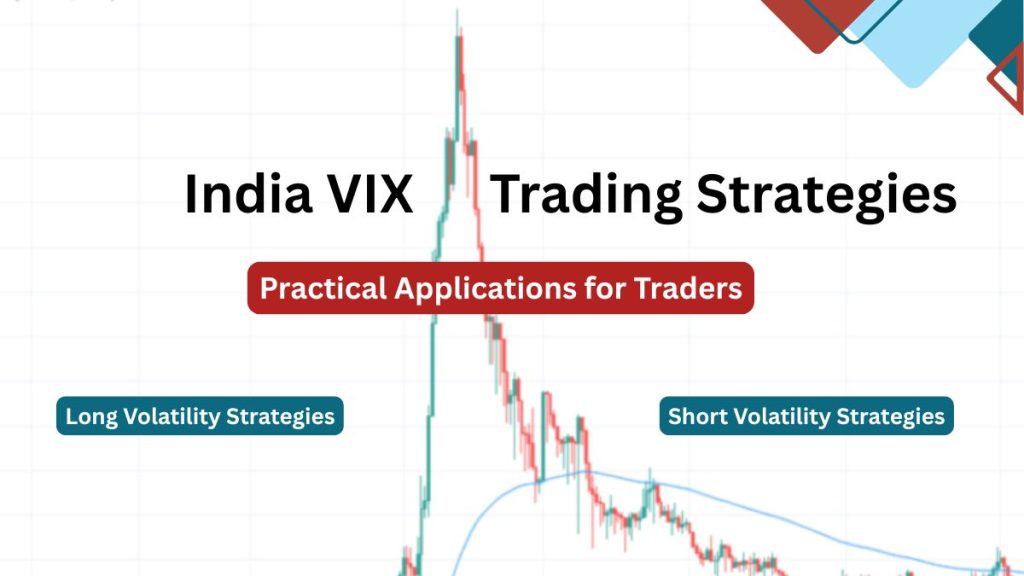
India VIX offers trading opportunities across various market conditions and trading styles. Knowing how to use these opportunities can boost trading performance. India VIX and its futures are designed to provide market participants with tools to manage and hedge volatility risk so that they can make better decisions. Various financial products like options and futures are affected by change in market volatility as measured by India VIX.
Volatility Based Strategies
1. Long Volatility Strategies
When market volatility is expected to increase, traders can use:
Long Straddle: Buy VIX call and put options with same strike and same expiration. This strategy profits from big price movement regardless of direction.
Long Strangle: Similar to straddles but with different strike prices, provides lower cost entry with wider breakeven points.
VIX Futures Trading: An alternative is to trade futures on VIX index, so traders can profit from increased volatility without being affected by market direction.
2. Short Volatility Strategies
When market volatility is expected to decrease:
Short Straddles/Strangles: Sell options when volatility is expected to decrease to earn premium.
Covered Calls: In low volatility environment, sell calls against existing positions to earn extra income.
Risk Management Using India VIX
Portfolio Hedging Applications High VIX means higher market volatility, so investors should reduce exposure or use hedging strategies like options. Low VIX means stable market, so investors can increase risk.
Position Sizing Guidelines
- High VIX periods: Reduce position sizes and increase cash holdings
- Low VIX periods: Consider larger positions in high conviction trades
- Use VIX levels to adjust stop-loss distances
Dynamic Asset Allocation When VIX is high, portfolio managers can reduce exposure to high beta stocks to minimize risk. When VIX is low, they can increase exposure to high beta stocks for higher returns.
Specialized Trading Strategies Using India VIX
India VIX offers specialized trading strategies for market participants who want to trade volatility or protect their portfolio from price movements. Volatility trading is treating volatility as an asset class, using VIX futures and options to profit from change in expected market volatility. Hedging strategies use India VIX to manage portfolio risks, so traders and investors can reduce exposure during high volatility periods. Fund managers and portfolio managers can use India VIX to decide their asset allocation, dynamically adjusting their holdings based on change in market volatility. By including India VIX in their trading and investment process, market participants can manage risk, optimize returns and navigate changing market conditions.
For Institutional Investors
Institutional investors including mutual fund managers and pension fund managers use India VIX as a risk management tool. By monitoring India VIX, these professionals can gauge market sentiment and take informed decisions to protect their portfolio. During high volatility periods, institutional investors may reduce their exposure to high beta stocks which are more sensitive to market movements and increase allocation to low beta stocks for stability. India VIX also supports technical analysis, so institutional investors can identify emerging trends and chart patterns that signal trading opportunities or risks. Before investing, institutional investors should read scheme related documents carefully, consider professional investment advisory services, and take tax advice. India VIX can also be used for demat account management and forward index level trading to further enhance portfolio risk management. By using India VIX, institutional investors can protect their portfolio from market downturns and position themselves for long term success in the ever changing financial markets.
Options Trading and India VIX: A Powerful Combination

India VIX and options trading are fundamental to understanding derivative markets. Volatility directly impacts option pricing, so VIX analysis is essential for options traders. VIX and its derivatives can also be used to hedge against falling stock prices, so investors can manage portfolio decline during high volatility periods.
Market risk is not only important for options traders but also for mutual fund investments. Investors should read scheme related documents before investing to know all the risks associated.
Impact on Option Traders and Premiums
High Volatility Environments When volatility is expected to increase, options become more attractive, offering higher potential profits to buyers. During these periods:
- Option premiums increase across all strikes
- Time decay may be offset by volatility gains
- Good time for option buying strategies
Low Volatility Environments Falling VIX values favor option sellers, as time value of options decays more rapidly. Characteristics include:
- Lower option premiums
- Faster time decay
- Good time for option selling strategies
Advanced Options Strategies Using VIX
Iron Condors in Low VIX: When VIX is low, iron condors can profit from continued low volatility and range bound markets.
Calendar Spreads: Use VIX analysis to time calendar spread entries, buy longer dated options when VIX is high and sell shorter dated options.
Volatility Arbitrage: Market participants have used VIX futures and options to capitalize on the general difference between expected (implied) and realized (actual) volatility.
For options trading education and strategies, visit IFMC Institute which offers courses on options and derivatives trading.
Factors Affecting India VIX: Market Drivers and External Forces
Understanding the factors that drive India VIX movement is crucial to predict volatility changes and market conditions.
Economic and Market Factors
Macroeconomic Announcements
- GDP growth data releases
- Inflation reports and monetary policy decisions
- Government budget announcements
- Trade balance and current account deficit data
Corporate Events
- Quarterly earnings announcements
- Major corporate actions and mergers
- Regulatory changes affecting specific sectors
- IPO launches and major fundraising activities
Global Market Influences
International Market Volatility
- US market volatility (S&P 500 VIX correlation)
- European and Asian market movements
- Currency fluctuations, particularly USD/INR
- Commodity price movements, especially crude oil
Geopolitical Events
- International trade tensions
- Regional conflicts and security concerns
- Global economic policy changes
- Central bank decisions worldwide
Technical and Structural Factors
Market Microstructure
- Options trading volumes and open interest
- Institutional fund flows
- Foreign institutional investor (FII) activity
- Domestic institutional investor (DII) participation
Seasonal Patterns
- F&O expiry effects
- Year-end portfolio rebalancing
- Festival season market behavior
- Budget and policy announcement cycles
India VIX Limitations and Considerations
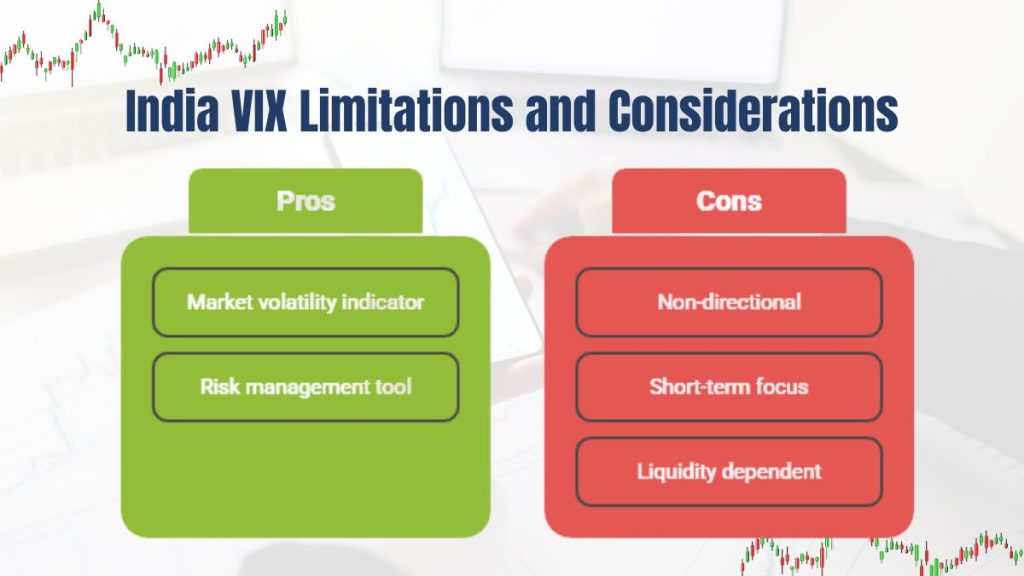
While India VIX is powerful, understanding its limitations is important.
Limitations
Non-Directional India VIX is non-directional, it doesn’t indicate which direction the market will move. It only indicates the magnitude of price movement.
30-Day Forward Looking The index is 30-day forward looking, which may not align with long term market trends or short term trading horizons. For more insights on methods used to forecast market movements, see technical analysis.
Options Market Dependency VIX calculations are dependent on options market liquidity and pricing efficiency. In illiquid market conditions, VIX readings may not be reliable.
Best Practices for VIX
Combine with Other Indicators Don’t use India VIX in isolation. Combine it with other market indicators, economic data to make informed decisions.
Avoid Overreaction A common mistake is overreacting to short term changes in India VIX. Don’t make drastic changes to your trading strategy based on temporary spikes or drops.
Context-Dependent Analysis Consider current market conditions, economic environment and seasonal factors when interpreting VIX levels.
Historical Analysis and Market Patterns
Historical India VIX analysis provides valuable insights for future trading decisions and market understanding. Changes in perceived risk can significantly impact the shape and expectations of the volatility term structure, how mean reversion and implied volatility movements are reflected in VIX futures.
Long Term VIX Behaviour
Mean Reversion One of the unique property of volatility – and the VIX Index – is that its level is expected to trend towards a long term average over time, a property commonly known as “mean-reversion”.
Market Cycle Correlations Historical analysis shows an inverse relationship between India VIX and NIFTY. Markets often peak when VIX is low and bottom when VIX is high.
Crisis Period Analysis
During major market events, India VIX typically shows extreme readings:
2008 Financial Crisis: During the global financial crisis, VIX reached extreme highs, peaking at 92.5 in November 2008, providing early warning signals.
COVID-19 Pandemic (2020): Unprecedented volatility levels offered hedging opportunities
Currency Crisis Events: Sharp VIX spikes during major rupee devaluation periods
For market analysis and educational resources on volatility trading, visit IFMC Institute which offers NSE certified education programs. Modern trading demands advanced tools and platforms for VIX analysis and implementation.
Platforms
Real-Time VIX
- Professional trading platforms with VIX integration
- Mobile apps for on-the-go monitoring
- Alerts for VIX threshold breaches
Historical Data
- Backtesting platforms for VIX strategies
- Statistical tools for pattern recognition
- Correlation with other market indicators
Systems
- VIX based algo trading strategies
- Risk management using VIX thresholds
- Portfolio rebalancing based on volatility
Risk Management
- Position sizing calculators with VIX
- Dynamic hedging
- Stress testing with historical VIX scenarios
For more information on NSE’s official VIX tools and resources, visit the National Stock Exchange website.
Future and Evolution
India VIX continues to evolve with changing market conditions and technology.
Regulations
Methodology Enhancements
- Ongoing refinement of calculation methodology
- New market data integration
- Technological improvements for accuracy
Market Structure
- Impact of new derivatives on VIX calculation
- Change in market maker participation
- Options market liquidity evolution
Education and Research
Academic Research
- Increasing focus on volatility prediction models
- Machine learning in VIX analysis
- Cross market volatility studies
Professional Development
- Growing demand for volatility trading expertise
- Specialized certification programs
- Industry specific training modules
For latest updates on volatility trading and market analysis, visit IFMC Institute.
Keep Learning: Markets are constantly evolving and so are VIX based strategies.
To incorporate India VIX in your trading and investment strategy you need to dedicate to understanding its intricacies, limitations and applications. As markets keep evolving, those who master volatility will be better equipped to handle uncertainty and opportunities.
The journey to volatility trading starts with education and practical application. Whether you are a beginner looking to understand market dynamics or an experienced trader looking to fine tune your strategies, India VIX is the tool to view and interpret market behaviour.
This article is educational in nature and not investment advice. Trading in derivatives is high risk and not suitable for all. Please consult with financial professionals before making investment decisions.




